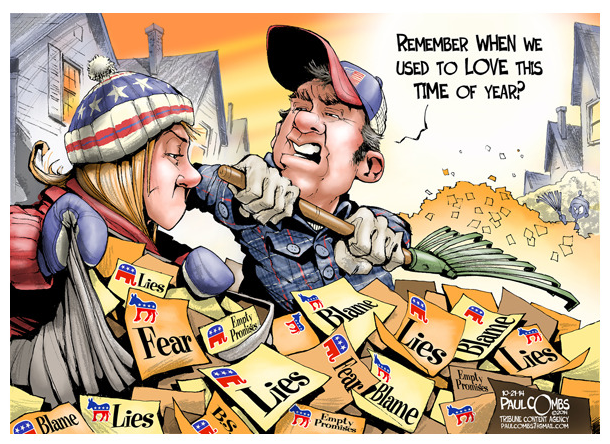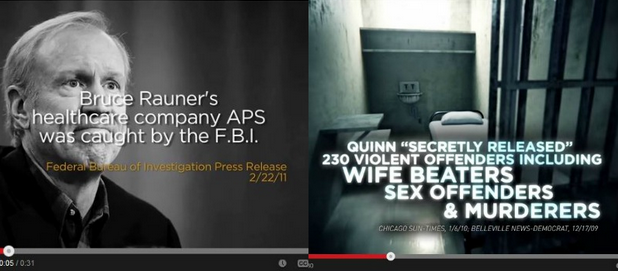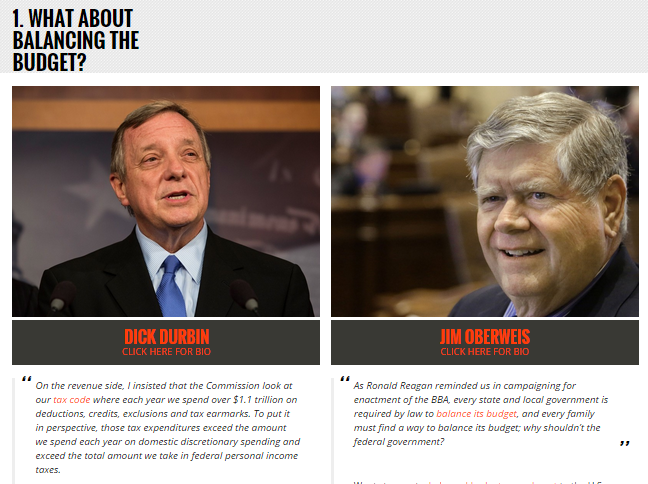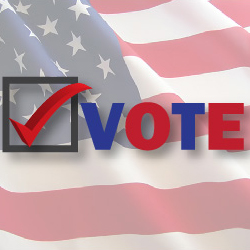 Fall is all about long-standing football rivalries, hayrides and pumpkin patches, and the crunch of fallen leaves. And this year, the cool, crisp air was also filled with the sounds of midterm election claims. According to the Center for Responsive Politics, all that ‘talk’ does not come cheap. The non-partisan group that tracks money in politics estimates spending on today’s elections to be nearly $4 billion, the most expensive midterms in history.
Fall is all about long-standing football rivalries, hayrides and pumpkin patches, and the crunch of fallen leaves. And this year, the cool, crisp air was also filled with the sounds of midterm election claims. According to the Center for Responsive Politics, all that ‘talk’ does not come cheap. The non-partisan group that tracks money in politics estimates spending on today’s elections to be nearly $4 billion, the most expensive midterms in history.
CNN likened it to a massive marketing effort – on a scale of Apple’s ad budget for four years. So how was it being spent to influence what voters think about this election? As a marketing consultant, I’ve spent countless hours evaluating and recalibrating my clients’ content and engagement strategies. Thought it might be fun on Election Day to take a quick look at how this Illinois voter’s content journey stacked up.
- Omni-channel. Yep, it’s everywhere. There was no getting around the broadcast, social, digital, earned, display, direct mail and face-to-face tactics deployed to build awareness and influence voter decisions. The magnitude of the effort isn’t terribly surprising when you consider Illinois is the 5th largest state in the country and expected to be among the most closely contested.
But despite the sheer volume of touchpoints, the content is remarkably light on utility. Take the endless series of TV ads, for example. Few give us a sense of the candidate’s platforms. And while I get that working with mass audiences may lend itself to a more emotional appeal, a glimpse into the character of the candidate, the negative bent is brutal. The most egregious attack ads paint an ugly picture of the opponent. Taken at face value, those 30-second spots imply that these folks may be better suited for the state pen than State office. (Remember, in Illinois, that’s not a big leap). But personally, I’m more inclined to dismiss them all because they obfuscate the real story, and go off in search of more rational content.
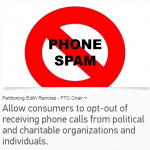 Too Intrusive. In their zeal to ‘reach’ us, they’ve gone too far and some consumers aren’t feeling it. In October, the intensity of that intrusion peaked. At the train station, in your neighborhood and on your phone. And it prompted action – but maybe not what the hopefuls had hoped. The frequent, unsolicited calls at home had one former colleague saying, “Enough, already” and taking his case to ‘make it stop’ to his social network. Lesson: Respect consumers’ boundaries. Give us the ability to ‘opt out.’ Anything less can work against your cause.
Too Intrusive. In their zeal to ‘reach’ us, they’ve gone too far and some consumers aren’t feeling it. In October, the intensity of that intrusion peaked. At the train station, in your neighborhood and on your phone. And it prompted action – but maybe not what the hopefuls had hoped. The frequent, unsolicited calls at home had one former colleague saying, “Enough, already” and taking his case to ‘make it stop’ to his social network. Lesson: Respect consumers’ boundaries. Give us the ability to ‘opt out.’ Anything less can work against your cause.
- Inform & engage. One of the most common (and frustrating) issues within any content journey is that it’s so hard to find the facts needed to make an informed decision. Consumers have to work for it. To help, most candidates create a content hub that features in-depth information on who they are and where they stand on key issues. Stories are packaged in short-form, long-form and video. Third party endorsements and other influencers are featured. There’s an opportunity to engage more directly – as a volunteer or donor. Good stuff. Where the work comes in for voters is in comparing the options.
Sites like Reboot Illinois feature original editorial and aggregated news about candidates. Its Election Scorecard offers a side-by-side comparison of where major candidates stand on the issues.
What’s interesting is that there’s no link to this site from the candidates’ pages. As we counsel brands, your target audience isn’t spending all their time on your owned properties to inform their decisions. Recognize you cannot control 100% of the message – and put your customers’/voters’ needs first. Make the content experience a smooth one – by guiding them to the content they’ll need as they move along their decision journey. The work should be the candidates’ to ensure their presence on those go-to sites, not the voters’.
- Speak to me. In an age of microtargeting, it’s pretty stunning how little that seemed to be used. At least, not on me. Based on what was pushed to me, it’s clear that I’m a mystery wrapped in an enigma. True, even after a campaign worker, IPad in hand, knocked on my door and captured my top priority issues. You’d think that he might leave me some material that spoke to my key care-abouts. Or directed me to a site to find where his candidate stood on said issue. Or, maybe a fast-follow, thanking me for my input and providing me with a reason to engage. As true for voters as the enterprise – stakeholder feedback that goes into the black hole is an annoyance at best.
I could go on and on but you get the gist. It appears that candidates largely opted for quantity over quality in this year’s election. A non-scientific poll of family, friends and colleagues indicate I’m not alone in my assessment. The upshot here is – if you’re going to market a candidate, then take full advantage of the more sophisticated tools available that enable you to better package, amplify and personalize your story. I’m looking forward to the post-election coverage of what worked, what didn’t and what kind of return was achieved on that $4 billion investment.
And voters – Nov 4th is not just Election Day but Common Sense Day. Let them know where YOU stand.

Principal
Engaging your customers is at the heart of successful marketing programs. For more than 20 years, Cheryl has been building and executing content and thought leadership strategies designed to do just that. She is excited to be applying that well-honed skill to a help companies like Microsoft, Cisco, 3M, Intel, Capital One and Barclaycard tap into their stakeholder communities and build sophisticated content strategies.
Her experience base spans a range of industries – from technology and financial services to retail, travel, consumer products and healthcare. Cheryl has served as an integral member of her clients’ marketing teams, providing counsel on marketing and brand strategy, thought leadership, media relations, product introductions, and event management.
Prior to joining ComBlu, Cheryl spent 10 years leading corporate marketing for large, complex organizations.

